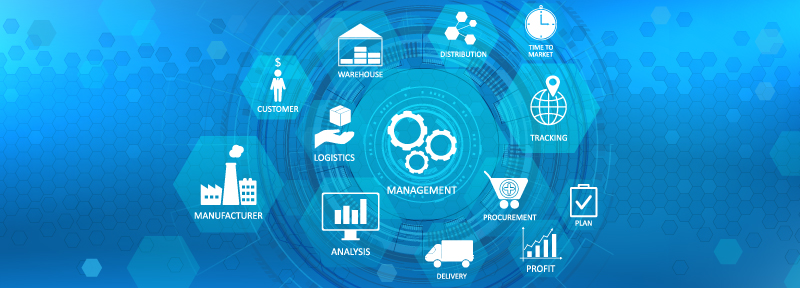
Streamlining Supply Chain with Analytics

Table of Contents
The supply chain forms the backbone of any organization and significantly impacts the final product, cost, customer service, and revenue. Right from procuring raw materials to delivering after-sales services, it comprises of all essentials parts and hence is too complex to handle manually or with outdated systems. With ever-increasing customer expectations, stiff competition, fluctuating macro, and microeconomic conditions, and multiple other factors affecting businesses and their supply chain, it can be a huge challenge for the operators.
This is where analytics can help. With everything interconnected to the other, any lack of appropriate coordination can cause huge issues. Supply chain analytics can integrate with relevant SCM systems and gather huge amounts of data from all stages like raw material procurement, manufacturing, inventory, retail, sales, customer, and after-sales. It can analyze this data and bring out patterns, trends, and game-changing insights in the form of dynamic intuitive dashboards and reports with charts and graphs. This empowers the executives to have an end-to-end view of the supply chain and have real-time insights and predictions on the movement of any product across the chain. This also enables them to make data-driven futuristic decisions on strategic, operational, and tactical levels to optimize the supply chain. Let’s discuss the four types of supply chain analytics:
Descriptive analytics
Descriptive analytics provides a detailed 360-degree view into the complete supply chain. The insights are conveyed via dynamic reports and dashboards. Descriptive analytics can gather and analyze data coming from all the sources to provide a single source of truth for everyone. These insights can be utilized on an everyday basis to optimize all the processes involved. Analytics can also help draw insights about which products are in high demand and how much safety stock to keep in the inventory for avoiding any losses due to lack of in-demand products. Furthermore, it can set alerts for out-of-stock situations. Operators can identify the inventory levels and trends in the past using this. It can analyze the supply data from the last 12 to find the average demand for a product, which is termed as the Coefficient of Variation. It can also find the number of individual customers a product has been sold to, known as Customers per SKU.
Predictive analytics
Predictive analytics enables the organization to forecast future outcomes based on historical data and other factors. Businesses are moving towards these AI/ML-driven analytics solutions to make futuristic strategies and decisions. This can help in streamlining the supply chain and inventory. Companies can do demand forecasting to understand potential future demand and organize resources accordingly to prevent any losses or dead stocks. They can also utilize what-if analysis to get the exact impact on the outcomes if the correlated factors are changed. From forecasting future trends to the effect of seasons or other factors on the supply chain can be easily understood with predictive analytics.
Cognitive analytics
Cognitive analytics works around the problems the way humans do, it understands, reasons, learns, and interacts in natural language. However, all this is done at high speed and accuracy. It can help answer complex questions regarding optimizations, future trends, customer experience, and much more.
Prescriptive Analytics
Prescriptive Analytics is the amalgamation of descriptive and predictive analytics. This utilizes Artificial Intelligence or Machine Learning to analyze historical and current data and prescribe the most optimal solution to a problem. However, for this way of analytics to be useful, the users need to be ready with specific questions or should be looking to solve a specific problem.
Uses
Supply chain analytics can transform the organization by streamlining and optimizing it with faster analysis and increased data-driven decisions. Here are few ways it can be used:

